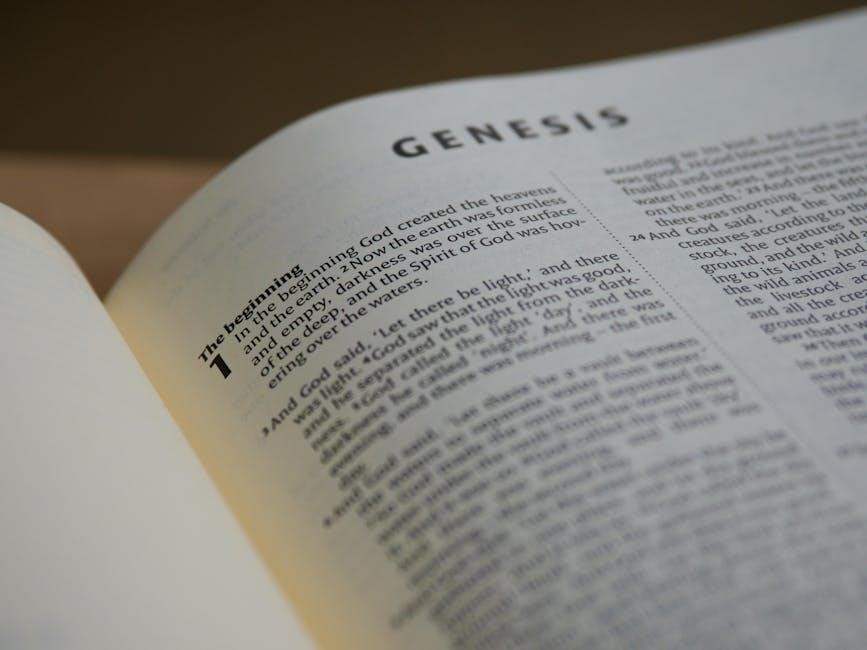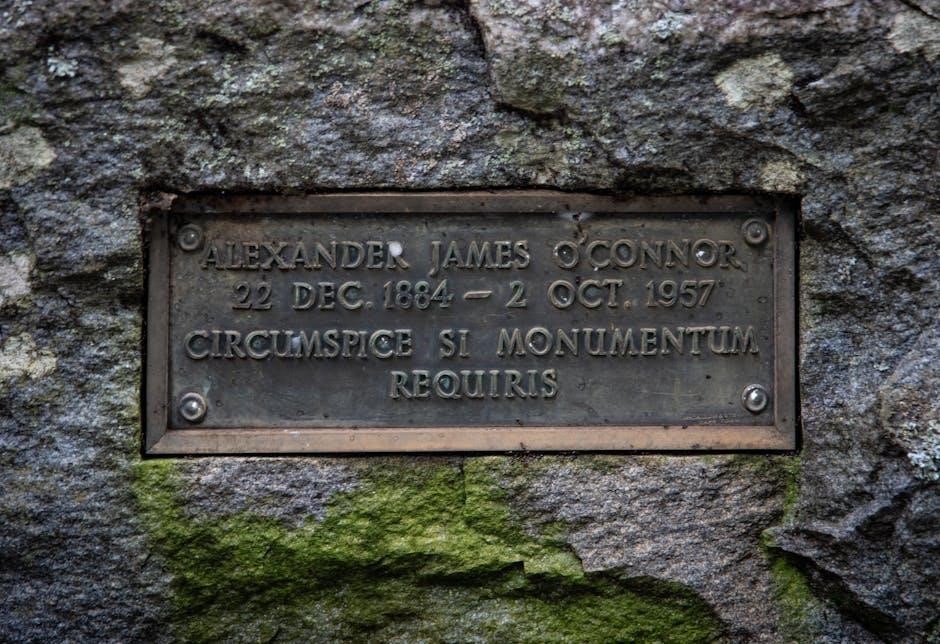Candlestick chart patterns provide valuable insights into market trends and price action. These visual tools, originating from Japan, are widely used in technical analysis to predict market movements. By interpreting shapes like hammer, engulfing, and piercing line patterns, traders can identify potential reversals or continuations in price trends. A comprehensive candlestick chart pattern PDF guide is essential for mastering these techniques, offering detailed explanations and practical examples to enhance trading strategies.
What Are Candlestick Charts?
Candlestick charts are visual representations of price action, displaying open, high, low, and close prices over time. Each candlestick consists of a body and wicks, with colors indicating price movement direction. These charts provide a clear view of market sentiment, making it easier to identify trends and potential reversals. They are widely used in technical analysis to help traders make informed decisions based on historical price data.
History and Origin of Candlestick Charts
Candlestick charts originated in Japan centuries ago, primarily used for rice trading. They were developed to track price movements and market sentiment. The charts were introduced to the West in the 19th century and have since become a cornerstone of technical analysis. Their unique design, with bodies and wicks, provides a visual representation of price action, making them invaluable for traders seeking to understand market dynamics and historical trends.
Importance of Candlestick Patterns in Trading
Candlestick patterns are crucial for identifying market trends and potential reversals. They provide insights into buyer and seller behavior, helping traders make informed decisions. Patterns like hammer and engulfing signals indicate shifts in market sentiment, enabling traders to anticipate price movements. These visual tools are versatile, applicable to stocks, cryptocurrencies, and other assets, making them indispensable for both novice and experienced traders seeking to enhance their technical analysis skills and strategies.

Basic Components of a Candlestick Chart
A candlestick chart displays open, high, low, and close prices over time. Each candle represents price action, with colors indicating market direction—green for uptrends, red for downtrends.
Structure of a Candlestick
A candlestick consists of a body, wick, and shadow. The body shows the open and close prices, with color indicating market direction. The wick extends to the high and low prices, while the shadow reflects volatility. This structure provides insights into market sentiment, helping traders identify potential trends and reversals. Understanding the candlestick’s components is crucial for interpreting patterns effectively in trading strategies.
Understanding Open, High, Low, and Close Prices
Open, high, low, and close prices form the foundation of candlestick charts; The open is the starting price, while the close indicates the ending price. High and low prices show the range within the period. These four values create the candlestick’s body and wicks, providing insights into market behavior. Green or white candles signify buying pressure, while red or black candles indicate selling pressure, helping traders interpret price action effectively.
Color Coding in Candlestick Charts
Candlestick charts use color coding to indicate market direction. Green or white candles show upward price movement, signaling buying pressure. Red or black candles indicate downward movement, reflecting selling pressure. This visual system helps traders quickly assess market sentiment and make informed decisions without analyzing raw data. Color coding enhances the intuitive nature of candlestick charts, making them a powerful tool for technical analysis.
Major Bullish Candlestick Patterns
Major bullish patterns like Hammer, Bullish Engulfing, Piercing Line, and Three White Soldiers signal potential upward trends. These patterns help traders identify buying opportunities and reversals.
Hammer Pattern
The Hammer Pattern is a bullish reversal signal appearing at the end of a downtrend. It features a small candle body with a long lower wick, indicating buying pressure overcoming selling pressure. This pattern suggests a potential upward reversal as bulls regain control. Traders often use the Hammer Pattern to identify entry points, especially when confirmed by subsequent price action. A candlestick chart pattern PDF guide can provide detailed insights and examples for mastering this pattern.
Bullish Engulfing Pattern

The Bullish Engulfing Pattern is a powerful reversal signal, typically appearing at the end of a downtrend. It consists of a small bearish candle followed by a larger bullish candle that “engulfs” the previous candle’s body. This pattern signals strong buying pressure and potential upward momentum. Traders often use this pattern to identify entry points in bullish trends. A detailed candlestick chart pattern PDF guide can help traders master this pattern and improve their trading strategies. Download a guide to learn more.
Piercing Line Pattern
The Piercing Line Pattern is a bullish reversal signal that appears after a downtrend. It consists of a long bearish candle followed by a bullish candle that “pierces” at least halfway into the previous candle’s body. This pattern indicates a shift in momentum, suggesting a potential upward trend. Traders often use this pattern to identify buying opportunities. A detailed candlestick chart pattern PDF guide can provide insights into mastering this pattern for effective trading strategies. Learn more.
Three White Soldiers Pattern
The Three White Soldiers pattern is a bullish reversal signal appearing after a downtrend. It consists of three consecutive white (or green) candles, each closing higher than the previous, with increasing prices. This pattern signifies a strong upward trend and buyer dominance. A detailed candlestick chart pattern PDF guide can help traders master this pattern, enhancing their ability to identify and act on potential market reversals effectively. Learn more.

Major Bearish Candlestick Patterns
Major bearish patterns, like the shooting star and bearish engulfing, signal potential trend reversals or downward movements. A candlestick chart pattern PDF guide details these formations. Learn more.
Shooting Star Pattern
The shooting star pattern is a bearish reversal signal that appears at the top of an uptrend. It forms when prices rise significantly during the session but close near the open, creating a small body with a long upper wick. This pattern suggests that bulls lost control, and bears are gaining dominance. A candlestick chart pattern PDF guide can provide detailed insights into identifying and trading this formation effectively.
Bearish Engulfing Pattern
The bearish engulfing pattern is a powerful reversal signal that appears at the end of an uptrend. It occurs when a small bullish candle is followed by a larger bearish candle that “engulfs” the previous candle’s body. This pattern indicates a shift in momentum, with bears overpowering bulls. A candlestick chart pattern PDF guide can help traders identify and interpret this formation, often signaling a potential downtrend ahead.
Dark Cloud Cover Pattern
The dark cloud cover pattern is a bearish reversal signal that appears during an uptrend. It consists of a bullish candle followed by a bearish candle that opens above the previous high and closes below the midpoint of the first candle’s body. This pattern suggests a potential trend reversal, as bears gain control. A candlestick chart pattern PDF guide can provide detailed insights into identifying and trading this formation effectively.
Gravestone Doji Pattern
The gravestone doji is a bearish reversal pattern that appears at the top of an uptrend. It forms when the opening and closing prices are the same, creating a cross shape. This pattern signals that selling pressure has overwhelmed buying pressure, indicating a potential trend reversal. A candlestick chart pattern PDF guide can help traders recognize and interpret this formation effectively in their analysis.
Neutral Candlestick Patterns
Neutral patterns like the doji, spinning top, and high wave indicate market indecision. These formations often appear during periods of equilibrium, signaling potential trend reversals or pauses. A candlestick chart pattern PDF guide can help traders recognize and interpret these signals effectively in their analysis.

Doji Pattern
The doji pattern is a neutral candlestick formation where the opening and closing prices are nearly identical, creating a small or non-existent body. This indicates market indecision, as buyers and sellers balance each other out. A doji can appear at the top of an uptrend, signaling a potential reversal, or at the bottom of a downtrend, suggesting a possible pause. It is often seen in periods of market equilibrium. A candlestick chart pattern PDF guide can provide detailed insights into interpreting this pattern effectively.
Spinning Top Pattern
The spinning top pattern is a neutral candlestick formation characterized by a small body and long upper and lower wicks. This indicates indecision in the market, as both bulls and bears exert influence but neither gains control. The pattern can appear in both uptrends and downtrends, signaling a potential pause or reversal. A candlestick chart pattern PDF guide can help traders interpret this pattern effectively, providing insights into market sentiment and potential price movements.
High Wave Candle Pattern
The high wave candle pattern is a neutral formation with a small body and exceptionally long wicks, indicating significant volatility and indecision. It reflects a struggle between bulls and bears, where neither side dominates. This pattern often signals potential market instability or a pause in the trend. A detailed candlestick chart pattern PDF guide can help traders recognize and interpret this pattern, offering insights into market sentiment and possible price fluctuations.

How to Use Candlestick Patterns in Trading
Mastering candlestick patterns enhances trading decisions by identifying reversals and continuations. Combine patterns with indicators for confirmation, manage risks, and adapt strategies to market conditions effectively.
Identifying Reversal and Continuation Patterns
Reversal patterns, like the Hammer or Bullish Engulfing, signal potential trend changes, while continuation patterns, such as Three White Soldiers, indicate ongoing trends. These patterns help traders anticipate market direction by analyzing price action and sentiment. Combining them with indicators strengthens trading strategies, enabling better decision-making in various market conditions.
Combining Candlestick Patterns with Other Indicators
Enhance trading strategies by integrating candlestick patterns with technical indicators like moving averages or RSI. For example, a bullish engulfing pattern paired with a moving average crossover can confirm a strong buy signal. This combination improves accuracy and helps traders make informed decisions. A candlestick chart pattern PDF guide often highlights these synergies, offering practical tips for combining patterns with indicators to maximize trading performance.
Risk Management with Candlestick Patterns
Effective risk management is crucial when using candlestick patterns. Traders should set stop-loss orders based on pattern-specific levels, such as below a hammer’s low or above a shooting star’s high. A candlestick chart pattern PDF guide often emphasizes the importance of position sizing and diversification to minimize losses. By combining these strategies, traders can protect their capital while leveraging the predictive power of candlestick formations in various market conditions.
Advanced Candlestick Pattern Strategies
Advanced strategies involve combining multiple candlestick patterns for stronger signals and incorporating psychological insights. A candlestick chart pattern PDF guide can help traders refine these techniques, enhancing accuracy and versatility across various market conditions.

Multiple Candlestick Pattern Combinations
Combining multiple candlestick patterns enhances trading accuracy. For instance, a bullish engulfing pattern followed by a piercing line signals a strong reversal. A candlestick chart pattern PDF guide often highlights these combinations, such as hammer and shooting star sequences, to identify trend continuations or reversals. Traders use these strategies to confirm signals, reducing false alarms and improving decision-making in various market conditions.
Psychological Insights from Candlestick Patterns
Candlestick patterns reveal market psychology, showing shifts in sentiment among traders. A hammer indicates fear turning to hope, while a shooting star signals greed giving way to doubt. These patterns reflect collective behavior, helping traders anticipate price movements. A candlestick chart pattern PDF guide often explores these dynamics, offering insights into how emotional extremes drive market trends and reversals.
Using Candlestick Patterns in Different Market Conditions
Candlestick patterns are versatile tools for analyzing various market conditions. In trending markets, engulfing patterns signal strength, while in ranging markets, doji patterns indicate indecision. Volatile conditions often highlight spinning tops or high wave candles. A candlestick chart pattern PDF guide helps traders adapt these patterns to different scenarios, ensuring effective application regardless of market behavior or asset type.

Resources for Learning Candlestick Patterns
Explore comprehensive resources for mastering candlestick patterns, including detailed candlestick chart pattern PDF guides, recommended books, and online courses tailored for traders of all levels.
Recommended Books on Candlestick Charting
Discover essential books on candlestick charting, such as “Candlestick Charting Explained” by Greg Morris and “Japanese Candlestick Charting Techniques” by Steve Nison. These resources provide in-depth insights into candlestick patterns, including detailed explanations and practical examples. Many books are accompanied by candlestick chart pattern PDF guides, offering visual aids to enhance learning. These materials are invaluable for traders aiming to master price action analysis and improve their trading strategies.
Online Courses and Tutorials
Enhance your knowledge with online courses and tutorials on candlestick charting. Platforms like Udemy and Coursera offer detailed lessons on identifying and interpreting patterns. Many courses include video tutorials, quizzes, and downloadable resources like candlestick chart pattern PDF guides. These materials provide practical examples and strategies for applying candlestick analysis in real-world trading scenarios, helping traders of all levels improve their skills and make informed decisions.
Downloadable PDF Guides
Downloadable PDF guides on candlestick chart patterns are an excellent resource for traders. These guides provide comprehensive details on various patterns, including bullish and bearish signals, with clear explanations and visual examples. Many are available for free and require no email sign-up, offering instant access to strategies and insights. They are ideal for both beginners and experienced traders looking to refine their skills in technical analysis and improve trading outcomes.

Common Mistakes to Avoid
Overtrading based on candlestick signals, ignoring market context, and misinterpreting patterns are common mistakes. Traders should avoid relying solely on patterns without confirming with other indicators or analysis.
Overtrading Based on Candlestick Signals
Overtrading occurs when traders execute too many trades based on candlestick signals without proper confirmation. This often leads to poor decision-making and increased transaction costs. Relying solely on candlestick patterns without considering market context or other indicators can deplete capital quickly. Traders must avoid impulsive actions and ensure each trade aligns with a well-defined strategy. Combining candlestick patterns with other tools helps mitigate risks and prevents overtrading.
Ignoring Market Context
Ignoring market context when using candlestick patterns can lead to misinterpretation of signals. Traders must consider broader trends, news, and economic conditions. A bullish engulfing pattern in a strong uptrend may signal continuation, but the same pattern in a downtrend could indicate a false reversal. Context helps traders distinguish between reliable and misleading signals, ensuring better decision-making and alignment with overall market dynamics. Always analyze patterns within the bigger picture.
Misinterpreting Candlestick Patterns
Misinterpreting candlestick patterns is a common mistake, often due to confusing similar-looking patterns. For example, a hammer and a shooting star appear alike but signal opposite trends. Traders must carefully analyze the context, such as the direction of the trend and surrounding price action, to avoid incorrect interpretations. Relying solely on pattern shapes without understanding their market context can lead to costly trading errors and poor decision-making.

Real-World Applications of Candlestick Patterns
Candlestick patterns are widely used in cryptocurrency and stock trading to identify trends and reversals. They provide practical insights for making informed trading decisions across various markets.
Case Studies of Successful Trades
Traders have successfully used candlestick patterns to execute profitable trades. For example, the bullish three white soldiers pattern signaled a strong upward reversal, leading to significant gains. Similarly, the piercing line pattern helped traders capitalize on trend reversals. These real-world applications demonstrate how candlestick patterns, when interpreted correctly, can lead to successful trading outcomes. A candlestick chart pattern PDF guide often includes such case studies to illustrate their practical effectiveness in various market scenarios.
Using Candlestick Patterns in Cryptocurrency Trading
Candlestick patterns are widely applied in cryptocurrency trading to identify trends and potential reversals. Patterns like the bullish three white soldiers and piercing line often signal upward movements, while shooting stars and dark cloud cover indicate downward trends. These visual tools help traders make informed decisions in volatile crypto markets. A candlestick chart pattern PDF guide can provide detailed insights and strategies for applying these patterns effectively in cryptocurrency trading scenarios.
Candlestick Patterns in Stock Market Analysis
Candlestick patterns are invaluable in stock market analysis for identifying trends and potential price reversals. Patterns like the bullish engulfing and dark cloud cover provide insights into market sentiment. These visual tools help traders spot opportunities and risks, enabling informed decisions. A candlestick chart pattern PDF guide offers detailed strategies for applying these patterns effectively in stock market analysis, enhancing trading accuracy and profitability.
Mastering candlestick chart patterns enhances trading accuracy and profitability. Utilize comprehensive guides like the candlestick chart pattern PDF to refine your skills and make informed decisions consistently.
Candlestick chart patterns are powerful tools for analyzing market trends and price action. Originating from Japan, they provide insights into buyer and seller behavior through distinct shapes like hammers and engulfing patterns. These patterns help traders identify potential reversals or continuations in price trends. A candlestick chart pattern PDF offers a comprehensive guide, detailing various patterns and their interpretations. By mastering these patterns, traders can enhance their decision-making and improve trading outcomes.
Final Tips for Mastering Candlestick Patterns
To master candlestick patterns, practice consistent analysis and combine them with other indicators for confirmation. Focus on high-liquidity markets for clearer signals. Stay patient and avoid overtrading based on single patterns. Use a candlestick chart pattern PDF as a reference guide to refine your skills. Regularly review historical charts to improve pattern recognition. Adapt strategies to different market conditions for optimal results. Discipline and continuous learning are key to long-term success in trading with candlestick patterns.






































































